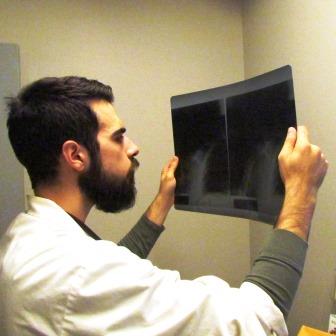
An ankle fracture of any kind brings excruciating pain.
The ankle transmits all of the weight of the body into the feet, constantly shifting the burden as one walks. So a fractured ankle throws off the entire body, requiring special treatment and often surgery.
Symptoms of such fractures include extreme pain, swelling, bruising, tenderness, dislocation and the inability to bear weight on the ankle.
Not that arm fractures, hip fractures or any other fractures don’t cause pain and long periods of inconvenience. But ankle fractures present unique issues requiring specialized treatment. What are the major types of ankle fracture and how are they treated?
Categories of Ankle Fracture
Bimalleolar and trimalleolar fractures rank among the most serious ankle fractures. They can occur when ligaments that stabilize the joint get disrupted, the bones separate and the ankle dislocates, often leading to a fracture.
Bimalleolar fractures occur when two of the three parts of the malleoli of the ankle are fractured. Most often bimalleolar fractures are factures of the lateral malleolus and medial malleolus bones. Often the ligaments are severely damaged, making the entire ankle joint extremely unstable.
Trimalleolar fractures take place when all three parts that make up the malleoli of the ankle become fractured. The three fractured bones that make up a trimalleolar fracture include the lateral malleolus, medial malleolus, and posterior malleolus. Dislocations accompany trimalleolar fractures frequently, often requiring surgery.
Common Causes
Exertion of severe pressure on the ankle causes such fractures. Such pressure on the mechanics of the body can come from a slip and fall, rolling of the ankle, twisting of the ankle, tripping and falling, extreme flexing, or overextension of ankle joints. Severe ankle-breaking force can also come from falling or impact, such as a motor vehicle accident.
Slip and fall or trip and fall accidents with sufficient force to fracture an ankle often come from uneven stairs, icy, snowy, or wet floors or pavement, cracked floors, cracked pavement, defective curbs, or walkways. Rocky, uneven, and defective surfaces often cause a person to fall violently. Motor vehicle accidents also cause trimalleolar fractures because the victim may have braced themselves, anticipating the impact, then the force of the collision causes the bones to either shatter or fracture.
Treatment
Some minor ankle fractures require only casting to re-align the bones and allow them to heal, but serious ankle fractures such as bimalleolar and trimalleolar fractures are too severe for casting alone to correct the bone alignment or dislocation. Unfortunately, surgery offers the only hope for true healing when the break happens in multiple locations, the bones are thrown out of place, and the entire ankle becomes unstable.
When surgery is required, the bones are repositioned into their correct configuration and secured in place by surgical screws, a rod, pins, or metal plates that fasten to the bone, holding the broken pieces together as they heal. Surgical insertion of such hardware is known as open reduction internal fixation surgery, or “ORIF”. Some types of screws are drilled into the bone, but have an attachment outside of the skin where they can be adjusted and tightened as needed. This is an external fixation. Most trimalleolar fractures require both open reduction and internal fixation to properly heal.
Risks of Ankle Fracture Surgery
Any surgery brings certain risks. But usually, only patients with pre-existing health problems who may not be able to withstand surgery without great risk should avoid surgical correction.
Common risks of bimalleolar or trimalleolar surgery include severe pain, infection of the incision location, bleeding, blood clots, and damage to nerves, blood vessels, or tendons. If surgery is avoided, a malunion complication may occur, and the joints may not heal properly, which increases the risk of continued life-long pain, and stiffness in the joints.
After surgery, there are residual risks that may affect the injured person immediately, such as problems with healing the fracture location, fracture blisters, ankle swelling, and pain caused by the hardware fastened to the bone. There are also risks that may affect the person later in life, such as arthritis.
Follow Up Care for Ankle Fractures
After surgery medical providers usually recommend that ankle fracture patients avoid bearing any weight on the healing fractures for at least six weeks, but sometimes longer if any ligaments or tendons were torn. Throughout the six weeks, the doctor will often place a cast, require a brace, attach splints, or use slings that may attach to pulleys to keep the injured area elevated.
Such healing modalities prevent further injury or improper healing by protecting the unstable area against movement and pressure. Such immobilization of the fracture site reduces the risk of the hardware shifting and encourages the healing process.
After brace or cast removal, physicians often recommend physical therapy. Alternatively, the doctor can send you home with some physical therapy techniques to do at home rather than seeing a specialist. Alternatively, the doctor can send you home with some physical therapy techniques to do at home rather than seeing a specialist. But it is always wise to get it checked by a professional such as your podiatrist who can provide better solutions for your ankle’s health, now and in the future.
Physical therapy, slow but steady extension and flexion of the injured ankle, helps restore ankle joint strength. Following a proper course of routine physical therapy, residual pain can be greatly reduced or even eliminated. Another goal is reducing the likelihood of future ankle injuries. However, the flexibility and strength of the injured ankle may never be completely restored.
For more on slip and fall or trip and fall injuries click here.
Views: 0




